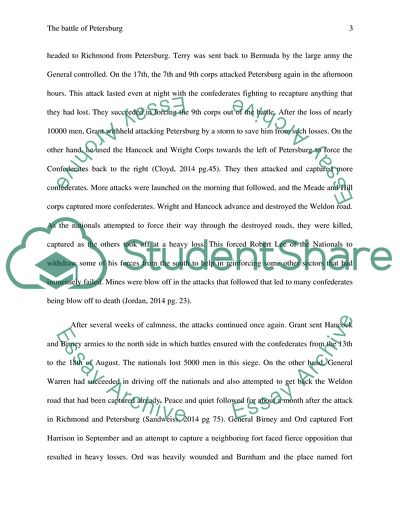Cite this document
(“Battle of petersburg Essay Example | Topics and Well Written Essays - 1500 words”, n.d.)
Battle of petersburg Essay Example | Topics and Well Written Essays - 1500 words. Retrieved from https://studentshare.org/history/1699648-battle-of-petersburg
Battle of petersburg Essay Example | Topics and Well Written Essays - 1500 words. Retrieved from https://studentshare.org/history/1699648-battle-of-petersburg
(Battle of Petersburg Essay Example | Topics and Well Written Essays - 1500 Words)
Battle of Petersburg Essay Example | Topics and Well Written Essays - 1500 Words. https://studentshare.org/history/1699648-battle-of-petersburg.
Battle of Petersburg Essay Example | Topics and Well Written Essays - 1500 Words. https://studentshare.org/history/1699648-battle-of-petersburg.
“Battle of Petersburg Essay Example | Topics and Well Written Essays - 1500 Words”, n.d. https://studentshare.org/history/1699648-battle-of-petersburg.


